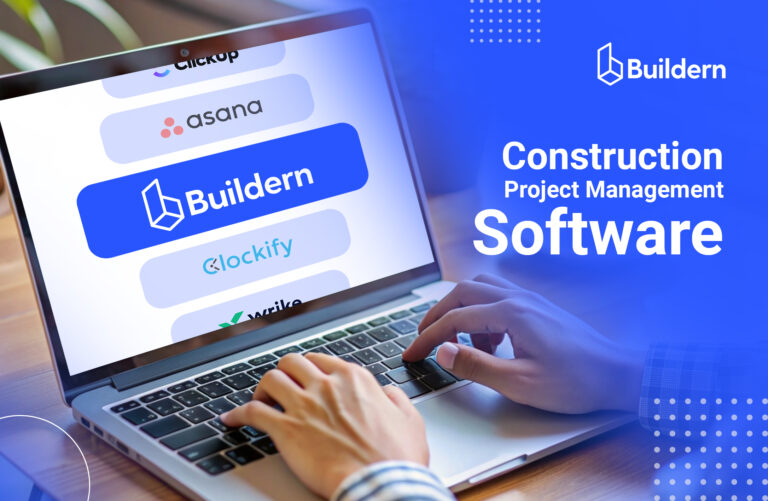Common HR Challenges in the Construction Industry
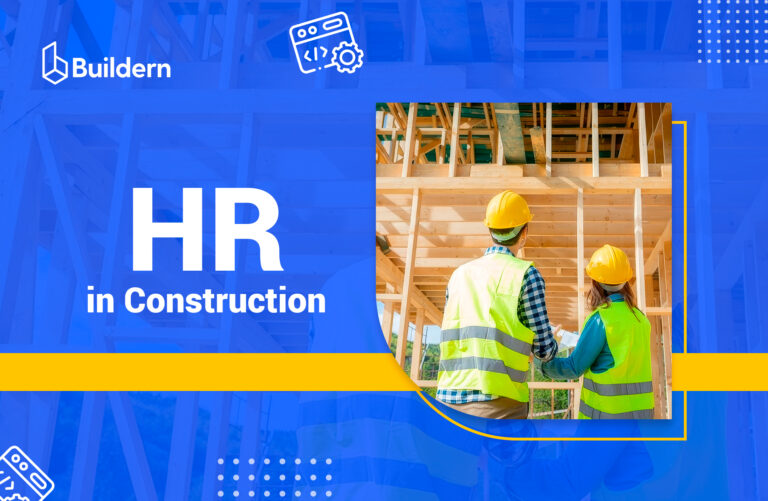
Hiring for a construction site isn’t just about finding people who perform physical tasks. One needs solid experience, technical understanding, and a team that can handle the pressure of an unpredictable job site. And that’s not always easy to pull off.
Each industry has its challenges, but here the teams deal not only with the project timelines. Construction is one of the most unpredictable work environments out there. It’s essential to keep things running smoothly.
Here, HR workflows have a direct impact on productivity, safety, and profit. Meanwhile, construction job management software makes it easier to keep the project on track and build a stronger network between all links in a chain.
In this article, we will break down the most common HR challenges in the construction industry and how to bring structure to managing your workforce with modern tools.
Table of Contents
- Why Are HRs in Construction Different?
- Main HR Challenges in Construction in 2025
- Onboarding and Training as a Solution
- Managing Safety Issues
- How Software Bridges Office-Job Site Gaps
- Solving HR Challenges in the Construction Industry with AI
- Bottom Line

Why Are HRs in Construction Different?
HR in construction doesn’t play by the usual rules. Most firms don’t manage big in-house teams. Instead, they have a small crew in the office and rely heavily on subcontractors to handle the construction process. That alone shifts how workforce management works. Traditional HR practices don’t always apply when your team is project-based.
Finding skilled labor, the seasonal nature of many jobs, complicated labor rules, and safety regulations do not make the job of an HR team easier.
Main HR Challenges in the Construction Industry
The construction industry faces unique challenges, starting from labor shortages to the need to automate processes.
Construction teams also tend to be incredibly diverse, often working across language and cultural barriers. And let’s not forget a lot of paperwork. Unless using the right tools, HR departments risk spending more time chasing forms than building effective teams. Let’s break out the main issues that building firms have to deal with.
Skilled Labor Shortages
A lack of experienced builders is a reality. The American Institute of Contractors says the industry is short of 500 thousand skilled workers. This is a problem for hiring as it slows the progress of construction. In some cases, the delays cost tens of thousands in penalties and lost revenue.
Besides, the aging of experienced workers is another concern. The pace of younger workers joining the trades is slower than those retiring. Only two people come to replace the five workers leaving the construction industry.
Young people are tech-savvy and more likely to choose companies using modern construction messaging tools for better communication. Young professionals will better understand the process if they communicate directly, attaching files and tracking updates in one place.
Thus, companies are better off offering modern tools to enhance the workflow, not to face labor shortages.
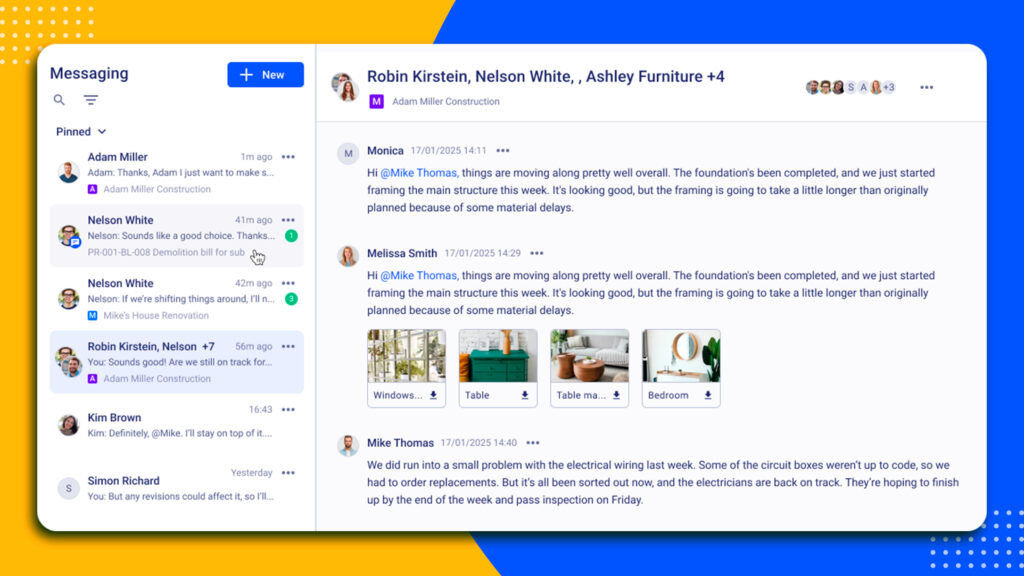
High Employee Turnover
Construction firms face a dual challenge. They face high turnover from short-term project cycles and the difficulty of retaining skilled talent. But here’s the smart approach: don’t choose one challenge to solve. Tackle both with a proactive workforce strategy. Weather, project timelines, and income instability are natural things for construction firms.
Leading construction companies are moving beyond short-term staffing by investing in structured workforce planning. This means offering retention bonuses, identifying internal talent, and creating off-season upskilling for construction workers.
For example, one of the workers may have an interest in safety protocols. The managing team may select the worker as a good candidate for an assistant site safety coordinator role in another project. With the right systems, workforce instability turns into a growth opportunity instead of a problem.
Compliance and Labor Laws
The daily struggle for construction companies is to ensure compliance with requirements. The problem is that federal requirements by OSHA sometimes overlap with state labor laws and union contracts.
The rules change often, and missing a detail may impact safety and project timelines. For instance, local labor laws may have different wage requirements or sick leave mandates. To put it short, what’s legal in one city may be a violation in another.
Managing human resources means putting systems in place to protect employees and enhance workflows.
Workforce Diversity and Inclusion
Challenges like language barriers at the construction site are more than cultural differences. They are operational risks. Miscommunication is critical and poses safety risks. That’s why smart builders prioritize training and offer practical solutions, like bilingual site signs.
Ultimately, inclusion does not stop at language. Cultural norms around communication and possible conflicts can slow down the process and undermine trust. The gender gap is also a major concern. The share of women in construction is as low as just 14 percent. If a builder wants to solve its skilled labor shortage, it must expand access and build inclusive career paths.
Diversity is not a challenge in the construction industry, but a strategy for long-term growth.

Onboarding and Training as a Solution
Hiring and onboarding the workforce in construction means building a system. Everyone from the project manager to the foreman understands what they are doing and their role in the complicated process.
The reality is, construction teams are often large, fast-moving, and diverse. A mix of full-time staff, subcontractors, day laborers, and rotating crews is working on the same project. The team moves fast, and it makes construction networking, consistency, and culture harder to maintain.
Onboarding is critical in terms of output and attitude. Mistakes can happen if the workers show up on day one with no idea of site rules, safety expectations, and how the team operates. And in construction, mistakes cost money and time. When expectations are clear from the start, crews are more confident, efficient, and ready to get to work.
Proper Communication is a Key
Cross-functional collaboration is essential in the office and on the construction site. For example, if HR fails to coordinate with the project managers for a scheduled training of new hires, a crew may be unprepared. The whole site can slow down, or even worse, shut down temporarily.
In an industry where every delay costs money, staying on top of schedules isn’t optional; it’s essential. When managing subcontractors and hitting critical deadlines, even a small miscommunication can cause costly setbacks. Of course, if you have a software management platform to tie it all together, things go smoother. This gives your team real-time visibility into schedules, task dependencies, and deadlines.
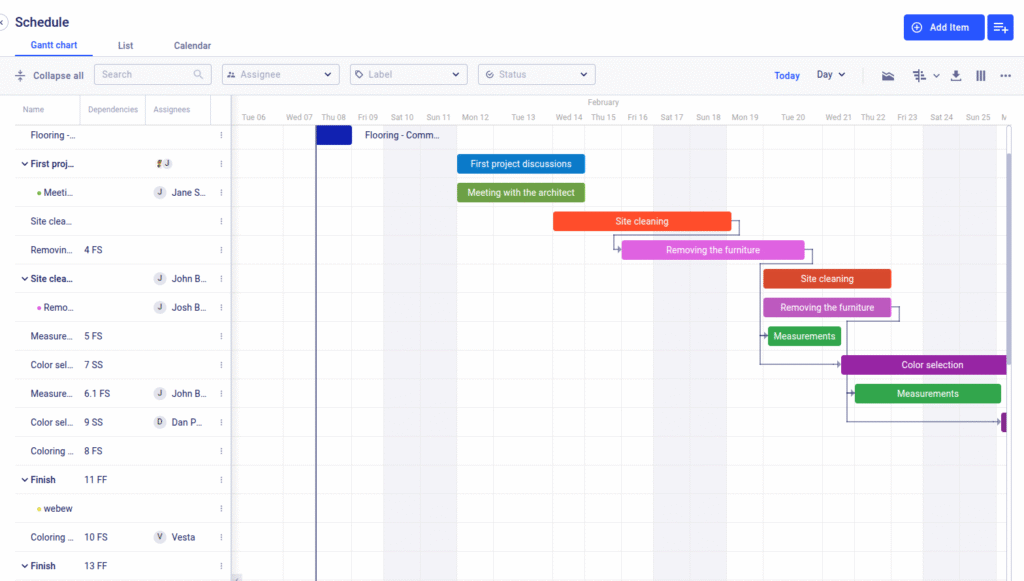
Managing Safety Issues
Construction is one of the most tightly regulated industries in many countries, and for good reason. A single oversight can lead to serious injury or long-term health risks for workers. There are dozens of accidents that may occur, ranging from vibration-related injuries to exposure to dangerous substances like toxins. That’s why safety can’t be treated as a one-time formality.
It all starts with onboarding. Managers should ensure every new hire goes through safety training. Regular refreshes, multilingual materials, and clear communication can significantly reduce the risk. Why is it important? If site managers and team leads work together with HR, safety is no longer a checklist but a shared responsibility.
The construction site inspections are a part of maintaining safety and avoiding accidents. You may think it’s a formality until something really dangerous happens. The inspections help identify mistakes. For example, it can be missing personal protection gear, faulty equipment, or unsecured scaffolding.
Routine inspections typically cover compliance with OSHA and local building codes. There are multiple areas, from fall protection systems to electrical safety and proper use of ladders. And, most importantly, it’s not optional but a baseline for keeping the workers safe.
Staying compliant means assigning trained personnel to conduct daily or weekly walkthroughs (depending on the area). The next step is to document the findings and immediately act if any issues are identified.
How Software Bridges Office-Job Site Gaps
A general contractor having an office and on-site staff may face some challenges when organizing workflow. If field updates aren’t making it back to the office in real-time, things slip. Communication breakdown is one of the causes of delays, rework, and budget overruns. To manage human resources, one needs to have great communication channels.
Prioritizing Real-Time Field Data
An office team is responsible for the management of the entire construction lifecycle. The project manager usually juggles countless tasks such as estimating and budgeting, scheduling, and quality control.
In addition, one of their primary tasks is to delegate and to keep track of every detail. Their daily operations depend on real-time updates from the field workers. If they are missing, the consequences quickly compound: possible delays, material shortages, or change orders may be late.
To bridge this gap, construction teams need software that connects field activity with office workflows. This is where Buildern management software can help. For example, it has daily logs, change orders, and RFIs to sync the project manager with subcontractors.
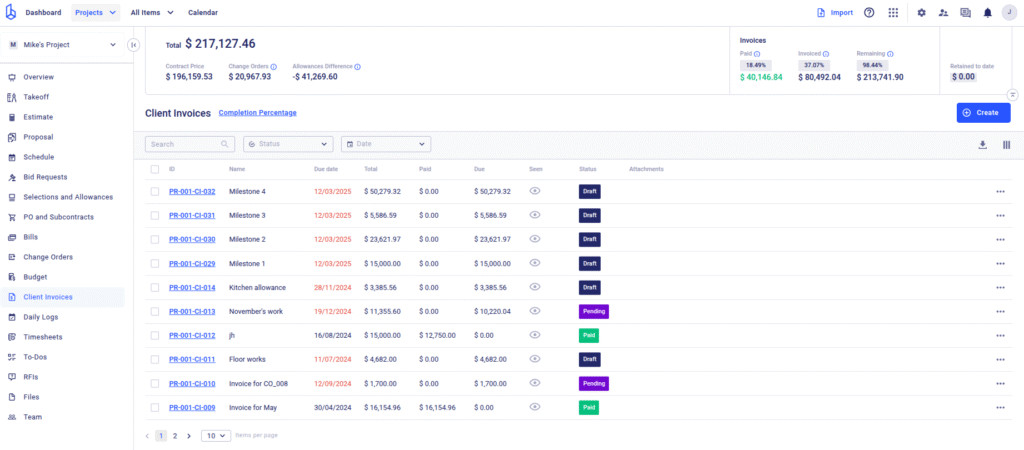
Managing Operations with Mobile Apps
If you are relying on software to keep the project moving forward, make sure it comes with a mobile app. The office staff is at the desk, but roofers and plumbers aren’t carrying laptops around muddy job sites.
Mobile apps give field crews access to schedules and checklists in real time. This is another option to bridge the gap between workers, reducing the risk of miscommunication.
Providing Easy Access to Files
Accurate data is not a nice-to-have in construction. It’s the backbone of keeping projects on track. The point is that the project usually involves many subcontractors, and their soft skills vary. It can become a challenge in terms of human resources management.
The reality is that field workers are usually less tech-savvy. They need quick and easy access to the information that matters. This includes site photos and updated plans.
That’s why modern software companies think of different tricks to make the process smoother. One of them, for instance, is generating QR codes for files and folders. Workers can scan and get instant access to what they need. No app download, no login, and no typing make it way easier.
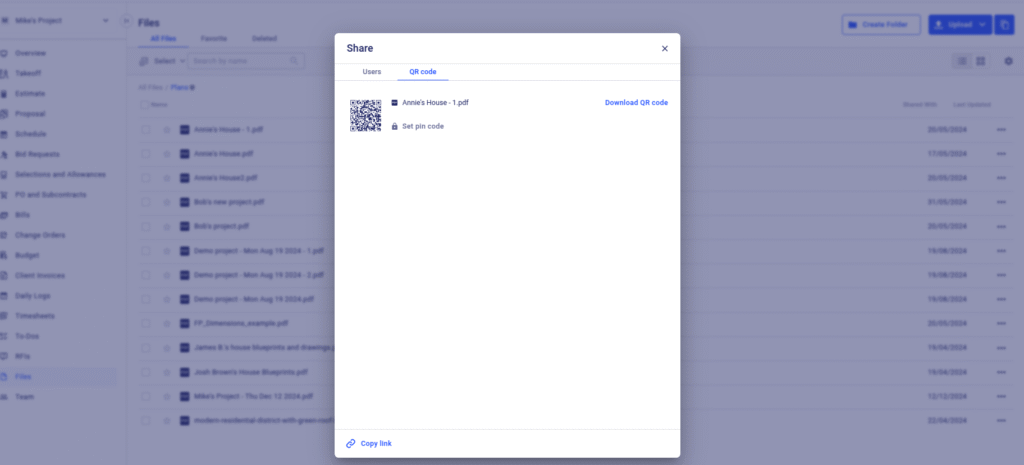
Modernizing Hour Tracking
Tracking worker hours used to be a nightmare as a single construction site can have dozens of workers. Imagine you run 3 or 4 such projects simultaneously. The best solution is to use mobile-friendly timesheet software.
The teams can log hours in real time without using spreadsheets. Thus, the office team has better control over workers’ performance. There are no payroll errors as timesheets are with QuickBooks and Xero.
Office managers can see who’s doing what and when right as it happens.
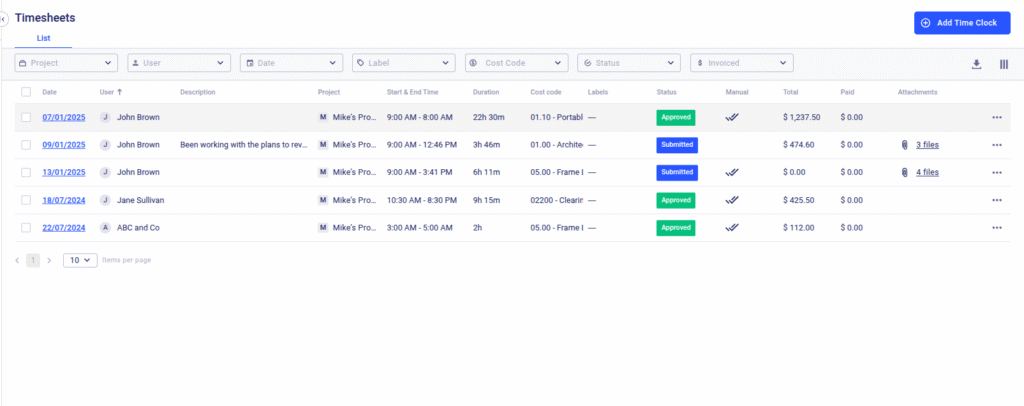
Solving HR Challenges in the Construction Industry with AI
It’s not a surprise that AI will play a key role in any workflow in the years ahead. HR management in the construction industry is not an exception. Automation of resume screening or interview scheduling has been a common practice. However, automation transforms into something more strategic with AI.
Modern AI tools go beyond administrative work. They provide intelligent recommendations tied to strategic decisions like forecasting skill needs and optimizing workforce planning. Onboarding systems can also assess subcontractor skills automatically. Besides, communication between diverse teams becomes easier with AI translation tools.
On the other hand, AI helps manage the financial side of the business. AI tools automate daily financial operations to avoid mistakes in interaction with subcontractors. AI-powered bills, invoices, and timesheets minimize duplicate payments and prevent discrepancies.
The goal is to give firms faster decision-making and better control over their workforce.
Bottom Line
Specific HR challenges in the construction industry require different solutions. The goal is to make everything faster and more efficient as various crews are involved. HR in the construction industry is closely linked to accounting and financing skills. Rotating subs and monitoring timesheets is not something a traditional HR department deals with.
Construction management software tools help an in-house team simplify the processes. It tracks hours, provides access to necessary information, and simplifies communication. With AI stepping in, a smoother workflow will improve further.

![How to Calculate Labor Cost in Construction the Right Way [Key Formulas and Factors]](https://buildern.com/resources/wp-content/uploads/2025/07/BLOG_COVER_How-to-Calculate-Labor-Cost-in-Construction-768x501.jpg)
